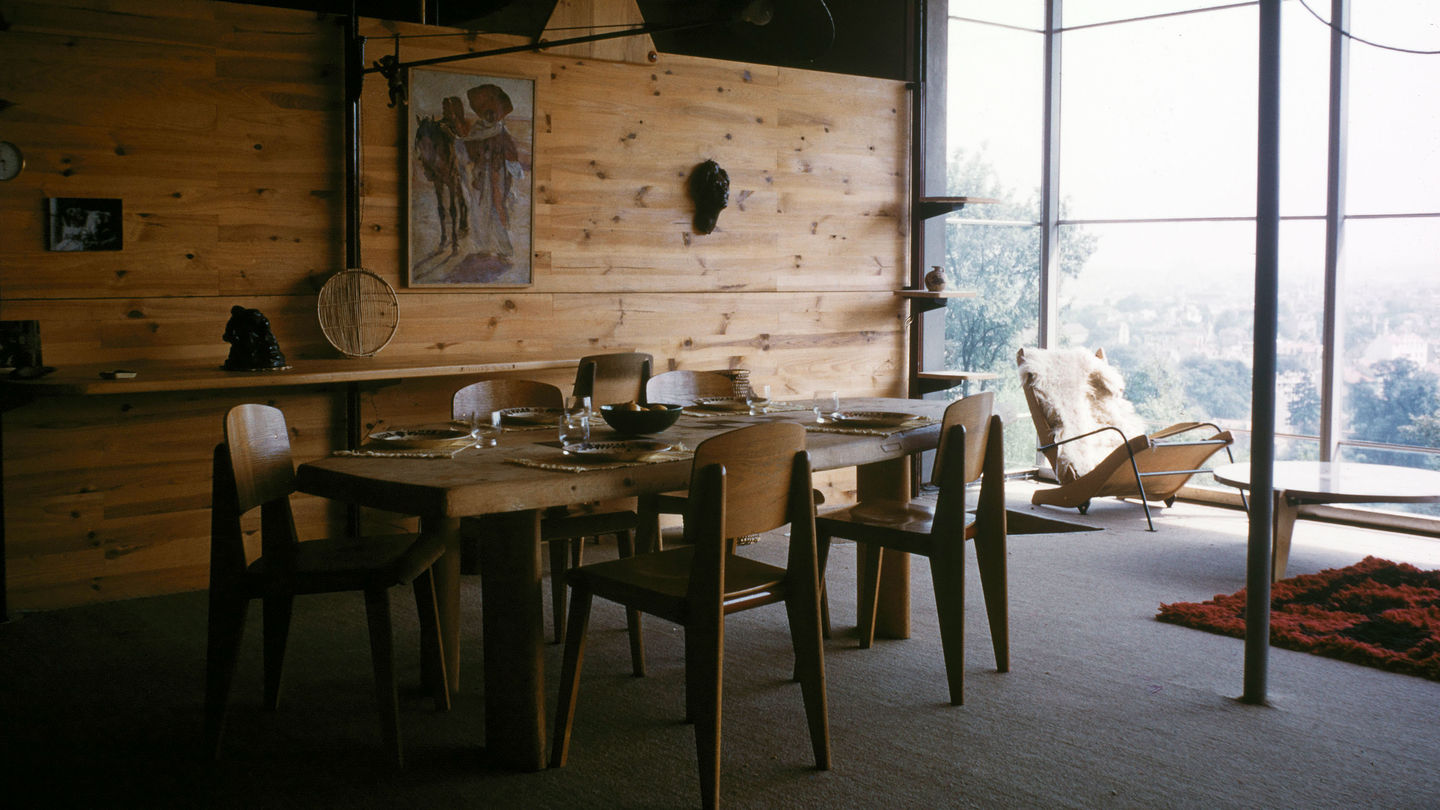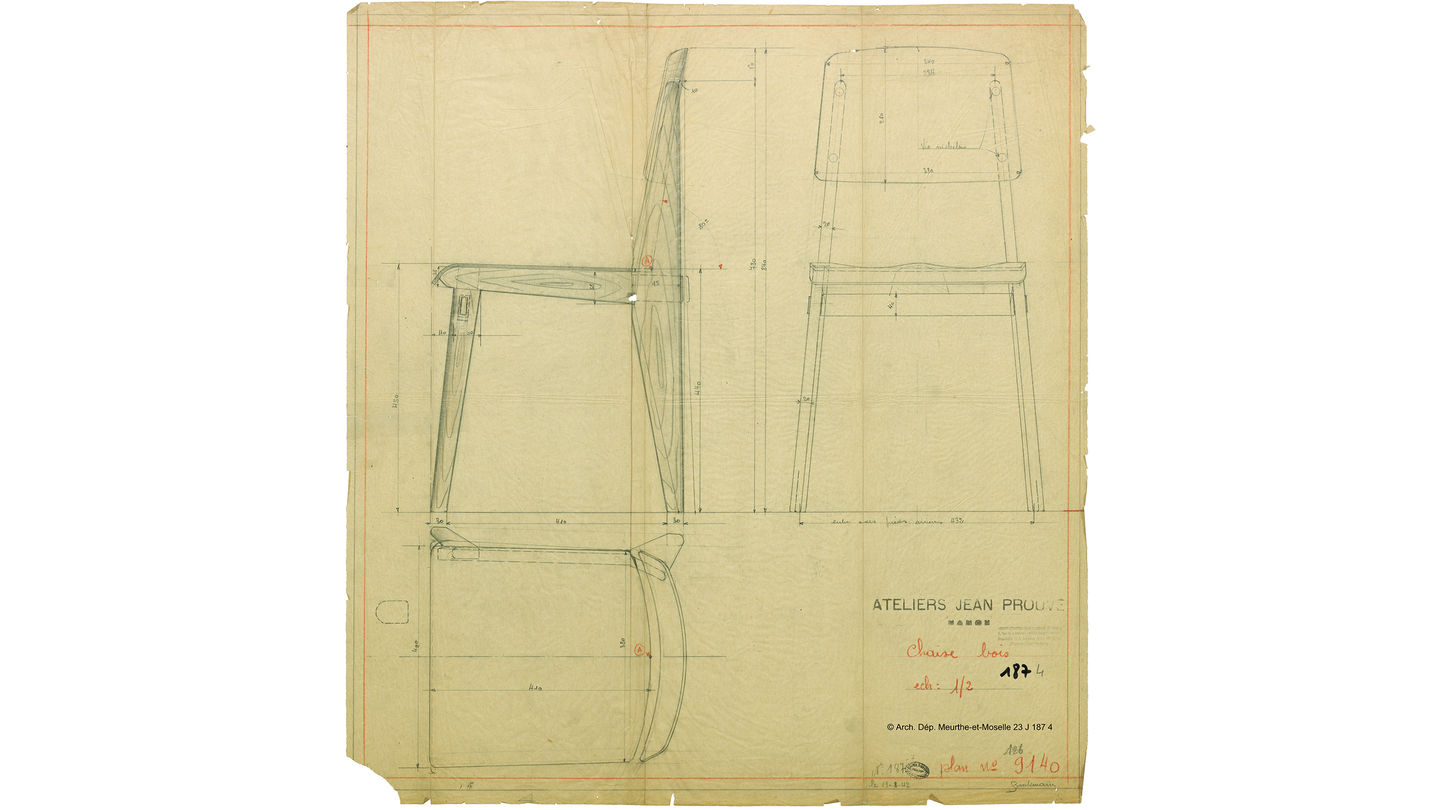When Limited Access to Materials Produces an Innovative Design
Chaise Tout Bois, 1941

For Jean Prouvé, the most important aspect of design was a hands-on approach. As a trained metal artisan, he was talented in his use of materials and knew exactly how to deal with their strengths and weaknesses, especially when working with metal, solid wood and plywood.
The designer’s daughter, Catherine Prouvé, explains, ‘When my father set out to develop a new design, he made a raw sketch and then moved swiftly to the machines in his workshop to create a first prototype. All my father’s designs were developed on the machines in the Ateliers Jean Prouvé. In the evening my father would throw away his sketch and only later, when he and his colleagues in the workshop were satisfied with the design after a series of mockups, would they move on to create actual technical drawings for the future production. This is the reason that very few of my father’s original sketches exist today.’
The designer’s daughter, Catherine Prouvé, explains, ‘When my father set out to develop a new design, he made a raw sketch and then moved swiftly to the machines in his workshop to create a first prototype. All my father’s designs were developed on the machines in the Ateliers Jean Prouvé. In the evening my father would throw away his sketch and only later, when he and his colleagues in the workshop were satisfied with the design after a series of mockups, would they move on to create actual technical drawings for the future production. This is the reason that very few of my father’s original sketches exist today.’

The development process for the Chaise Tout Bois was not very different. The chair was created in response to a shortage of materials during the Second World War, when only wood was primarily available in most parts of the world.
The Chaise Tout Bois became the only all-wood chair by Prouvé. Similar to the Standard chair in metal, the striking profile of the Chaise Tout Bois articulates Prouvé’s idea of creating a chair with added strength at the transition point between the legs and the seat – a joint that always has challenged the designers of chairs due to the distribution of weight in the human anatomy. Pressure upon a chair is greatest at the point where it carries the weight of the torso. To reinforce this zone, Prouvé deliberately exaggerated the size of the rear frame and created a shape similar to aircraft wings; a profile that was re-used in many of his later designs and architectural constructions.
During the war, several prototypes of the Chaise Tout Bois were created to test the strength, joints, leg position and connections between seat and backrest.
In 1945 Jean Prouvé proposed the chair as an item of what was classed ‘emergency furniture’. It was made of oak, a well-known type of wood that was largely used for cathedral roofs and in the boat industry and had proven strong and durable. Prouvé soon received an award for his design.
The Chaise Tout Bois became the only all-wood chair by Prouvé. Similar to the Standard chair in metal, the striking profile of the Chaise Tout Bois articulates Prouvé’s idea of creating a chair with added strength at the transition point between the legs and the seat – a joint that always has challenged the designers of chairs due to the distribution of weight in the human anatomy. Pressure upon a chair is greatest at the point where it carries the weight of the torso. To reinforce this zone, Prouvé deliberately exaggerated the size of the rear frame and created a shape similar to aircraft wings; a profile that was re-used in many of his later designs and architectural constructions.
During the war, several prototypes of the Chaise Tout Bois were created to test the strength, joints, leg position and connections between seat and backrest.
In 1945 Jean Prouvé proposed the chair as an item of what was classed ‘emergency furniture’. It was made of oak, a well-known type of wood that was largely used for cathedral roofs and in the boat industry and had proven strong and durable. Prouvé soon received an award for his design.
The honour was bestowed by the Meubles de France (Furniture of France) competition in 1947, which sought to find attractive, high-quality, mass-produced furnishings to meet the post-war needs of society – particularly refugees and young married couples.
Later the Chaise Tout Bois was replaced by a knockdown version with metal and wood components, and then by model no. 305 made from wood and metal – today known as the Standard chair by Jean Prouvé.
Later the Chaise Tout Bois was replaced by a knockdown version with metal and wood components, and then by model no. 305 made from wood and metal – today known as the Standard chair by Jean Prouvé.


Vitra is now also reissuing Chaise Tout Bois, which matches the modern-day mindset, not just with regard to the choice of material but also in terms of inventiveness.
Publication date: 16.7.2020
Author: Stine Liv Buur with Catherine Prouvé
Images: 1. Agence Photographique de la Réunion des musées nationaux / © RMN and ProLitteris: Jean Prouvé’s home in Nancy, built in 1954. View of the living room with a version of the Chaise Tout Bois around the dining table. Photo from 1955; 2 Ateliers Jean Prouvé, chaise bois. Arch. dép. de Meurthe-et-Moselle, 23 J 187/4. © [ADAGP] with permission from Catherine Prouvé; 3. © Fonds Perret: Headquarter Centre d'études nucléaires du Commissariat à l’énergie atomique; 4. Lorenz Cugini; 5. Marc Eggimann



